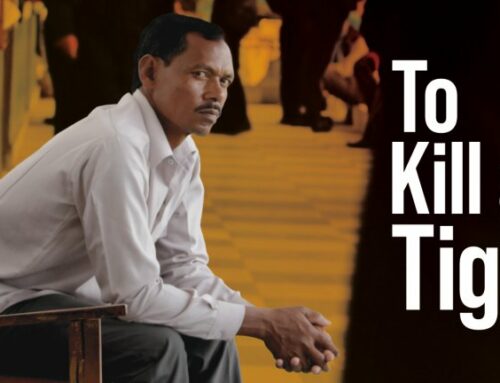We are in the golden age of documentaries and a new one just released is an absolute masterwork. LISTEN TO ME MARLON gives us a piercingly intimate look inside the actor who changed everything about acting for all time, Marlon Brando. It turns out that this most enigmatic and provocative of stars left us quite a map to his life–his history, his craft, his personality, his soul– over 200 hours of private audio recordings never before heard by the public.
And so we do listen to Marlon, directly, courtesy of filmmaker Stevan Riley who from almost the first frame lets us hear the actor speaking to us in that unmistakeable, strangely nasal but enormously evocative voice, telling us that he has had his face and head digitized and that actors will soon be obsolete. What follows is one of the most profoundly eerie sequences I’ve ever seen on film. We see and hear this digital mask of Brando, a virtual death mask, reciting Macbeth’s famous soliloquy on mortality and the futility of life– from beyond the grave. As we hear him say the lines–
To-morrow, and to-morrow, and to-morrow,
Creeps in this petty pace from day to day,
To the last syllable of recorded time;
And all our yesterdays have lighted fools
The way to dusty death. Out, out, brief candle!
Life’s but a walking shadow, a poor player,
That struts and frets his hour upon the stage,
And then is heard no more. It is a tale
Told by an idiot, full of sound and fury,
Signifying nothing.
–we realize that the filmmaker has laid an extraordinary foundation for what is to follow. Brando wrestled with the most fundamental dilemmas of human existence his entire life, but for him the metaphor disappears; the rest of us can wonder are we all but bad actors whose sound and fury signify nothing. Brando, the artist, was full of both sound and fury, and in the next 103 minutes we hear him tell of his troubled childhood, the creative, spirited mother whom he described as the town drunk, but whom he loved, and his brute of a father who slapped him around, whom he hated and wouldn’t let near his own children. When the film delivers the young Marlon to us in black and white home movies and we see a beautiful blonde, full-lipped boy of around 10 or so, hear him describe himself as “unwanted,” and talk about getting dressed early in the morning, stealing out to sit beneath a tall tree, staring up at its leaves against the sky–we are indescribably moved.
Luckily these memories would find an outlet in “the method, ” imparted by famed acting teacher Stella Adler (by way of Stanislavski) who helped Brando channel his suffering, anger, imagination, and unquenchable curiosity about people. It seems Brando was uniquely ripe for the technique. He describes walking around NYC fresh from Omaha, looking at people, trying to crack them open in just 3 seconds, trying to figure out what they’re hiding. And according to the actor, they are always hiding something.
Extraordinarily revelatory are sequences where painful childhood recollections are intercut with scenes from Brando’s role as the brute Stanley Kowalski in A STREETCAR NAMED DESIRE. We see his rage erupt in a terrifyingly potent performance that wrung him out, made him a legend, and changed acting forever. Brando understood like no one before him, that onscreen the camera turns the face into the stage, and that this heightened reality drives home a truthfulness rooted in real experience. He likens the role of an actor to that of a fighter who “sucker punches” the audience, that the job of an actor is to “knock ’em over with an attitude, a word, or a look…figure out a way to do it that’s never been done before.” He not only knocked us out, but also Gable, Cooper, and all the standard bearers of the old stock way of approaching the craft.
The film makes clear Brando’s growing impatience with the superficial “business” of Hollywood and the stardom that gradually robbed him of the reality of normal life and the ability to simply “be.” There are priceless clips of Brando being interviewed on TV, visibly uncomfortable with the format and in one notable episode with his thug of a father who clearly resents him. More amusing are his interviews with comely female reporters intimidated by his stardom and with whom he mercilessly flirts– no doubt to break through his own starry facade and have a real encounter, sexual or otherwise.
No need to wonder at this “unwanted” man’s growing social conscience which sensitized him to injustice on all fronts and fueled his activism on civil rights. How callous Liv Ullman and Roger Moore look now on that night in 1973, smirking after presenting Brando’s Best Actor Oscar for THE GODFATHER to Sacheen Littlefeather who famously accepted in Brando’s place with a plea for more humane treatment of those unjustly treated by society and misrepresented by the film industry.
Brando’s love life was just as fraught. He sought fulfillment in a continual string of liaisons with women to whom he was never faithful and with whom he fathered many children, some of whom went on to lead tragic lives. The ending is especially painful to watch. We don’t know all the particulars of his children’s torments but we become even more deeply familiar with Brando’s misery. The filmmaker treats all of this material with notable grace, and poetically striking visuals, taking us into the heart of Brando’s darkness, neither ennobling nor castigating, but shedding light, and making coherent, relatable connections.
In a truly fine documentary, the subject remains center stage, gently shaped by the filmmaker so as to reveal a deeper truth. Here Stevan Riley mesmerizes with Brando’s own insights, and supports his words with a searching musical score, sometimes a lone piano, at others the erratic rhythms of a rock or jazz riff that echoed Brando’s free and improvised path. The result is powerfully illuminating; I learned a lot more about what true actors really do up there, and to what extent movies and theater continue to be a way that the culture speaks to itself. Beware the tales full of sound and fury we tell ourselves.
In the current climate of computerized special effects and animated characters, Brando’s warning about actors’ obsolescence is remarkably prescient. But In LISTEN TO ME MARLON as we watch him strut and fret his hour upon the stage and screen, he’s ironically, digitally, preserved forever. I may be a fool, but I choose to believe it signifies something; Brando’s performances and this documentary have “lighted the way.” DO NOT MISS “LISTEN TO ME BRANDO.”






Leave A Comment
You must be logged in to post a comment.